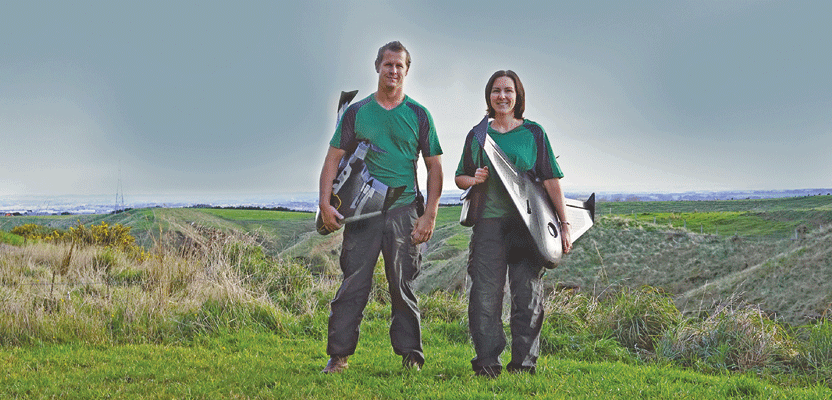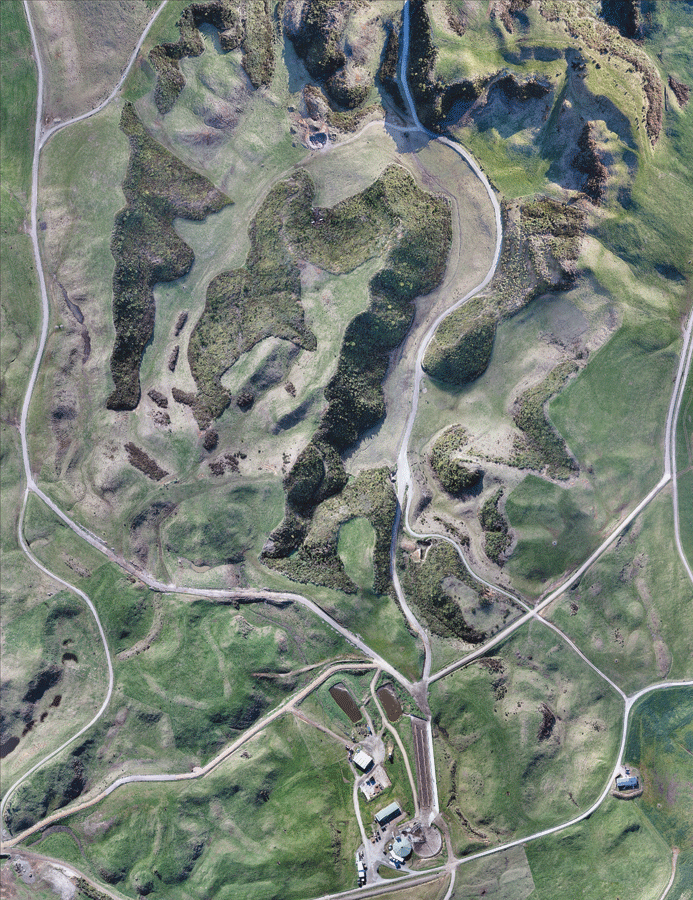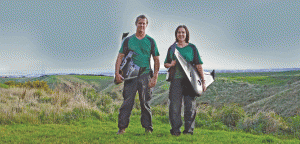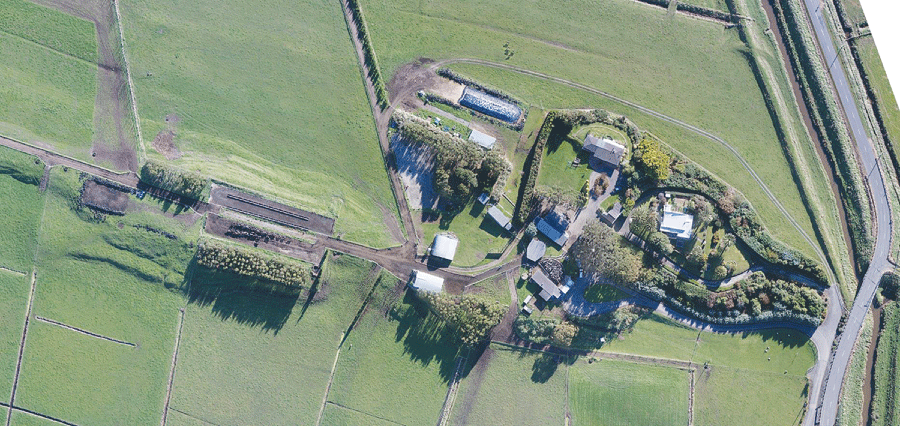Can an owner/operator sustain a thriving business using only UAS? It’s happening in New Zealand with orthophotography of farmland.
After little more than four years in the orthophotographic business, Chris McFadzean, owner/operator of Epiphany Mapping in New Zealand, has logged more than 1,500 UAS flights. This makes him one of the most experienced UAS pilots in the geospatial arena.
Chris’s work takes him all over the country, with jobs of one or two flights, or up to several weeks of all-day flying. Averaging between 5 and 30 flights per week, Chris predominantly orthophotographs farmland. He also performs quantity surveying for mines and quarries, contouring, stock piling, and erosion monitoring.
Chris grew up on farms in several different parts of New Zealand and chose his career out of love for the land. He also comes from a family of innovative problem-solvers, and he combines that entrepreneurial can-do attitude with a desire to work with technology. So, after selling a company that he co-founded and worked at for 15 years, he decided that orthophotography via UAS was a business initiative that could work.
New Farm Work
Chris now holds an exclusivity contract with AgHub, which evolved from his previous business that is now a division of a farmer-owned cooperative called Ballance Agri Nutrients. Ballance is considered to be New Zealand’s largest fertilizer supplier to farmers, while AgHub complements that offering with Web-based farm systems software and a mapping
service. It enables farmers to capture a wealth of information about their operations, a key component of which is an all-inclusive and accurate farm map. That’s where Chris’s business comes in.
Using a Trimble UX5, Chris provides clients with comprehensive maps that clearly detail assets, boundaries, hazardous areas, farm and paddock areas, drainage and other features—even in remote areas that are not accessible by land-based vehicle or foot. Chris’s farming clients use the maps to help them make informed decisions on a wide range of farm management issues.
Busy Days
At about the same time New Zealand dairy farmers are preparing for their first milking, Chris is leaving his central North Island home to drive to the job site; 4:00 a.m. starts are necessary to capture the earliest light possible for flying.
“Daylight time is money,” says Chris. He typically tries to schedule two smaller jobs (one or two flights) for the same day, in which case the early start allows driving time between each job at around noon.
His UAS is easy to set up, so Chris can quickly become productive on the job site. Upon arrival he positions ground markers and locates a suitable area of land to launch his UAS, which he controls via Trimble Access field software on a rugged PC.
A flat landing location is not absolutely necessary—Chris finds that a gentle slope is acceptable provided the ground is smooth, as rough or rutted ground may prevent a UAS from skimming easily during landing.
“Finding the right spot for takeoff isn’t usually the biggest challenge,” says Chris. “The trickiest part is making sure the wind won’t cause a problem, especially for landings.” The environment Chris operates in puts his UAS through its paces, since wind is a virtual constant in New Zealand, and its direction can change quickly.
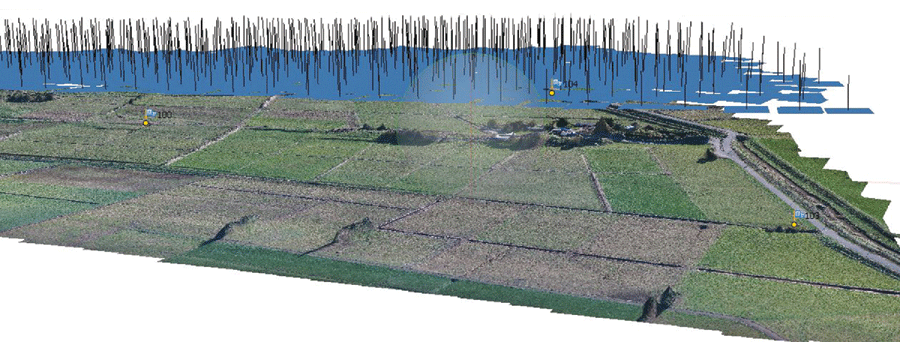
McFadzean’s aerial data enable his customers to make informed decisions about many different kinds of land use.
Extreme Landscapes
A unique aspect of Chris’s work environment is New Zealand’s extremes of topography in combination with civil aviation regulations. Flying a UAS at more than 125 m (400 ft) is prohibited, so when the UX5 is flying over rugged terrain, Chris has to lean on every bit of his 1,500+ flights’ worth of experience. The river beds with high embankments that he surveys as part of erosion monitoring are particularly daunting—some are thousands of feet high—and require him to plan each flight carefully so he can collect high-quality data without damage to the UAS.
“Yeah, I hit a few hillsides in the early days,” says Chris with a laugh. “But I chose to work in the countryside, so I guess that risk is all part of it. An urban area wouldn’t present the same challenge.” Where the terrain is rugged and hard to reach, the UAS delivers data more quickly and safely than a traditional survey would.
Because the UX5 is stable in the air and because he’s such an advanced user, Chris is able to stretch the UAS’s capabilities in the contrary winds that occur on steep hillsides and underneath mountains. Often these wind conditions are different from those at the takeoff and landing locations at lower elevation. If the wind is gentle enough, Chris can use his experience to avoid dangerous objects such as a cliff faces, regardless of direction.
One of the largest jobs Chris has ever surveyed was approximately 8,000 hectares (20,000 acres) in the central North Island for a local iwi (Maori tribe). The job had to be completed as quickly as possible; as grass grew in the warm summer weather, the appearance of the land changed dramatically, which made stitching together the data from discrete flights very difficult. By flying from dawn to dusk and surveying in ground marks after dark, Chris completed the job in about three weeks.
“I mulled over the idea of a UAS investment for years,” says Chris. “And now I’m really pleased with the decision. Orthophotogrammetric surveys are brilliant for large tracts of land, and you can collect enormous amounts of data very quickly and safely.”
Once a job is complete, Chris processes the data to a point where he can deliver a DTM and orthophoto—either to the client directly or to AgHub.
Chris‘s flexible lifestyle as the owner/operator of a UAS-based business suits his young family and takes him all over the countryside that he loves. As demand for map services such as his expand across the country, it seems that taking the plunge was a worthwhile adventure.

